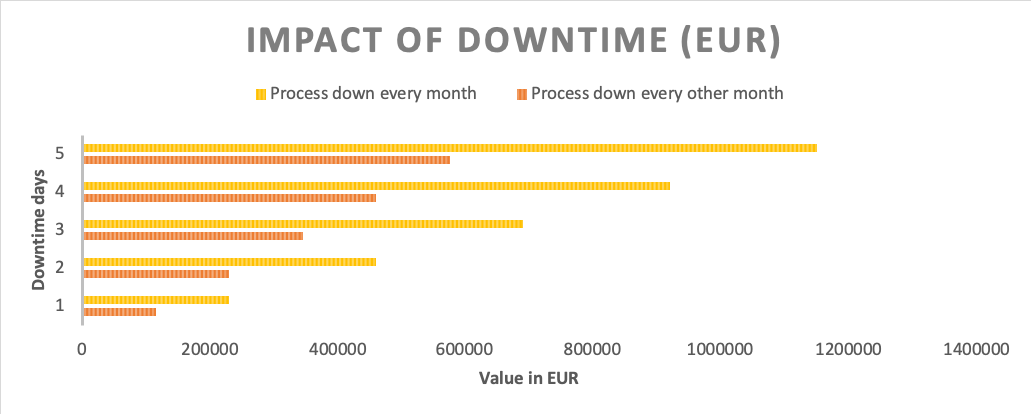
Maintaining your RPA: Vacay yey! But who looks after our robots?
Maintaining RPA:
Vacay yey! But who looks after our robots?
In Finland, a total amount of 1,5 million workers are spending a well-deserved vacation during the summer months from May to August, and 34 % of us have set an automatic reply to emails for July. 819 000 Finns withdraw to summer cottages, and in other countries, vacation-mode kicks in following similar local traditions. As the days grow longer and the weather warms up, one part of the organisation keeps on running unimpacted by the change in seasons: The digital workforce.
Digital workers also HAVE TO keep running; if they fail to do so, they will not create value to the business. However, the technology tends to require significant amounts of runtime maintenance. We’ve all seen how the robots crash, need new scheduling, or situations where the target system fails to launch calling for incident and problem management. The need for maintaining RPA doesn’t take into account vacation plans: Inconvenient as it is, the same effort needs to be put into the robots as any other time.
A readily available maintenance organisation is needed through the year to ensure digital workers always operate smoothly. But some topics need to be considered when deciding how to set this up:
1. Capacity
The number of processes that one maintenance specialist is able to handle is related to, e.g., the complexity of the automations, quality of the build, and criticality of the process. At early stages, the amount of personnel needed is typically 1 FTE for 5-10 processes. As the processes get more stable and the organisation more mature, 1 FTE is likely to maintain a somewhat larger amount of automations.
As personnel always have absences in the form of sickness, training and the very actual vacation season, the organisation’s size should be set up so that the operations don’t suffer, and the automations stay up and running regardless of these fluctuations.
2. Scalability
A well-organized RPA Delivery team with a good pipeline typically delivers 1-3 automations to production per developer each quarter. With a delivery team of 4 developers up to 50 automations are deployed in a year. This rate of growth requires for the maintenance organisation to be scaled up from 1 to 5 FTE’s at the same time to keep up to the task of maintaining RPA.
3. Competence
Most RPA incidents can be identified and resolved by investigating logs as the incidents are typically related to changes in target applications. Updating the RPA application modeler to get the solution running does not require in-depth knowledge of the target process but demands strong experience in the automation technology in use. In fact, the maintenance specialists should be among the most experienced developers in the organisation; this requires training in the chosen technology and extensive experience in developing automations.
4. Maintenance in the delivery team
Maintaining the solutions in the delivery team is a valid way of handling maintenance needs but also has a significant weakness. If developers tend to transform into full-time RPA maintainers when they have deployed 5-10 solutions to production, this hinders the progress of the whole program. Scaling up the solution and hitting targets slows down and the entire thing can come to a stand-still. The situation can be quite costly as the most significant benefits of RPA are linked to volume and using the technology on an industrial scale.
5. Costs
The digital workforce is only creating value when the robots are working as intended. If your organisation has an automated process pool of 100 FTE’s and the yearly fully-loaded cost of an FTE is 70 000 €, the impact of all processes being down for 1 day each month is potentially 230137€ (3,29 FTE). If the monthly downtimes would last longer than 1 working day, the yearly cost impact would grow in the way presented in the following chart.

This chart visualises the yearly cost of downtime when an organization has 100 FTE’s in production each carrying a fully-loaded cost of 70 000 € a year (downtime between 1-5 days/ month).
To visualise the impact of a well-organised maintenance function, I have also included a chart comparing the costs of having 1-5 downtime days per month to a situation where the 1-5 downtime days happen every other month.

This chart visualises the yearly cost of downtime when an organisation has 100 FTE’s in production each carrying a fully-loaded cost of 70 000 € a year and downtime happens either every month (in yellow) or every other month (in orange).
Looking at the cost of downtime, it is clear that setting up effective maintenance is required for productive automations. The maintenance function should aim to continuously improve the solutions to add to the automation-level of business processes and minimise downtime. Setting up, running, and growing an in-house maintenance team, however, also has its costs.
As stated in the beginning, 10 processes in production usually require 1 full-time maintenance specialist. The following chart visualises the growth of running cost for a maintenance organisation that is being scaled up to maintain 10, 25, 50, 75, or 100 processes in production. Bear in mind that on top of these numbers, you must consider training, recruitment, 24/7 rotation, sick leaves, vacations, etc.

This chart visualises the yearly cost of maintenance when the organisation has 10-100 processes in production and 1 FTE valued at 70 000 € a year is required to maintain 10 processes.
Costs can also be related to the mission-criticalness of a process; meaning that process A may carry a much greater cost than process B for being down over a weekend. Significant additional costs may result from downtime consequences such as losing a client, sanctions for failing to keep to service terms, putting production behind, etc.
When planning the maintenance of your RPA solutions, I recommend considering the following:
- Do you have business-critical solutions in production?
- Are the business-critical solutions running in the night time?
- Do you have enough competence in your chosen RPA technology to deliver maintenance 24/7?
6. Outsourcing
The purpose of an RPA maintenance outsourcing service like Digital Workforce’s Run Management is to tackle the challenges mentioned above. Our service frees up the customer’s time to focus on their core functions and ensures the 24/7 operation of the solutions in production. We are also continually improving the solutions which add to uptime and optimise processes to shorten their transaction time.
The service follows ISO20000 guidelines, includes quality acceptance, automated monitoring, making standard changes to processes, and managing and updating schedules. The customer can decide the priority of each process as part of the service, which affects e.g., the SLA.
About Digital Workforce
Digital Workforce is a leading service provider specialising in Intelligent Process Automation (IPA) services on an industrial scale. We have automated over 1,000 business processes for our customers saving time and money a thousand-fold for our clients. We help and mentor organisations in their intelligent automation journey and digital transformation. Visit our website to learn more!
Post by Elias Levo, Head of RUN Management


